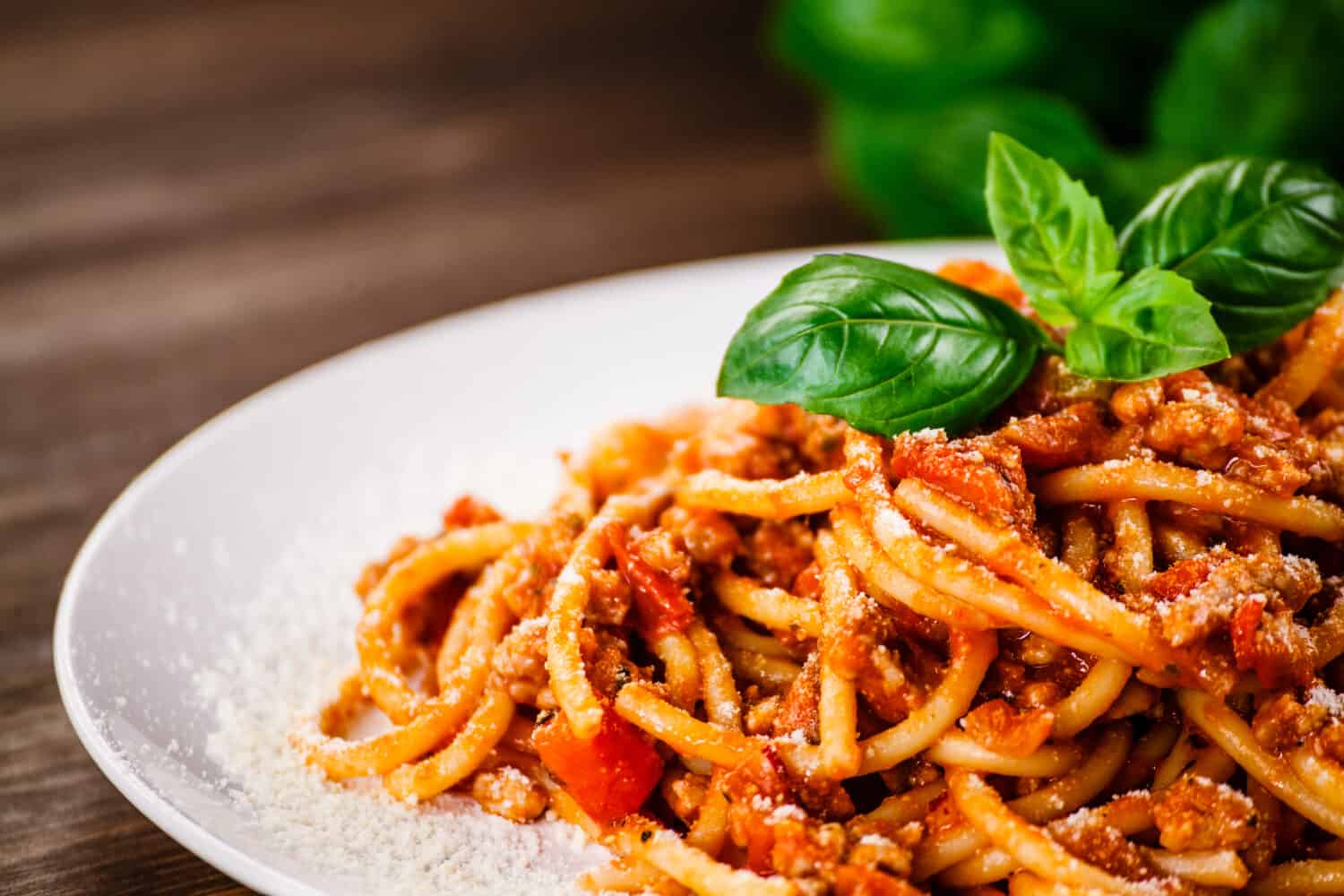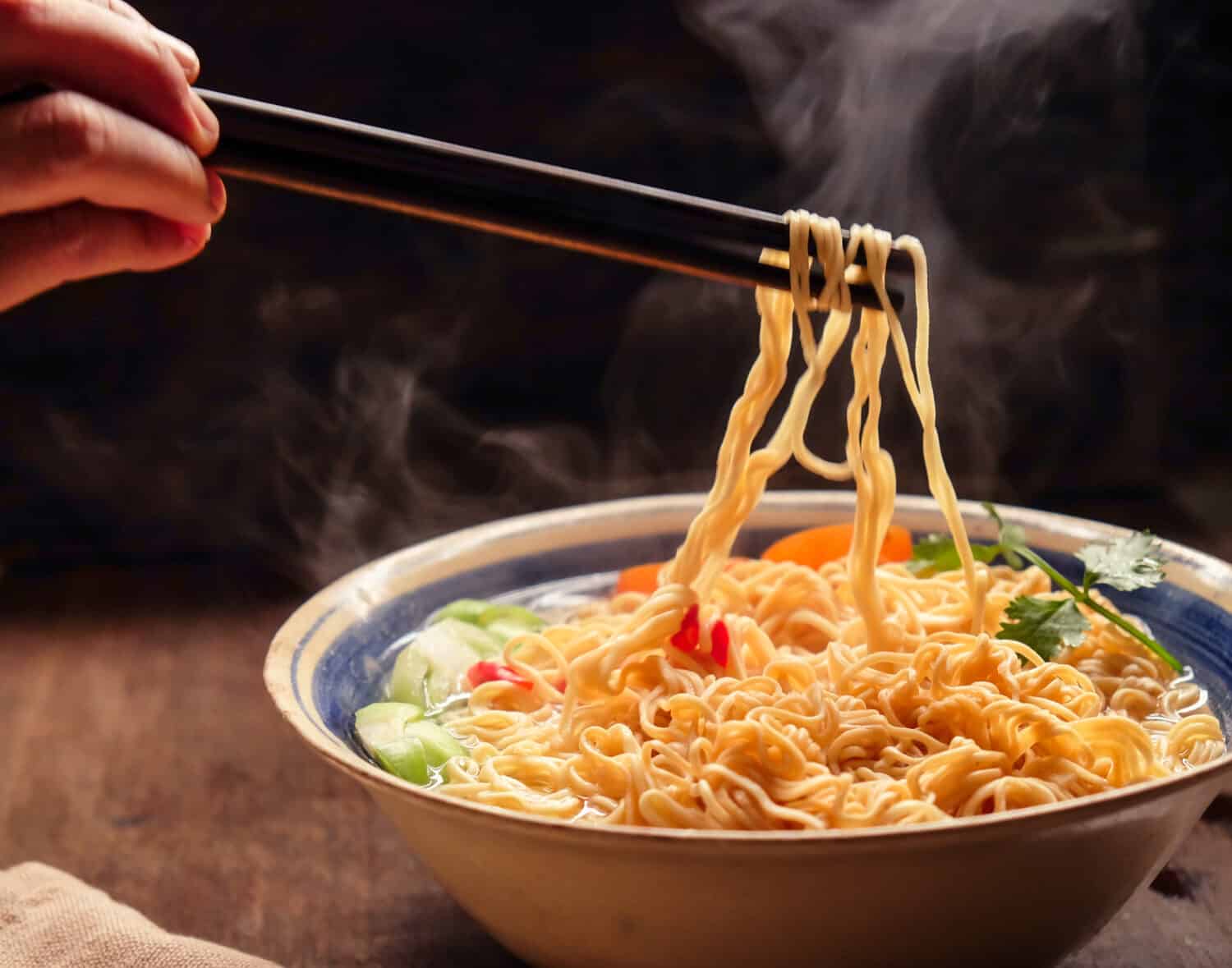Difference Between Spaghetti and Noodles

The primary distinction between noodles and spaghetti is that noodles are made from a variety of grains, including rice, wheat, and even potatoes, while spaghetti is a particular kind of Italian pasta made from durum-wheat semolina and water. Noodles are a common ingredient in many cuisines, including Asian, but spaghetti has its roots in Italian cooking. Finally, noodles come in a range of shapes and sizes, while spaghetti is usually long and thin.
Lets examine the main differences between these two pasta types.
| Spaghetti | Noodles | |
|---|---|---|
| Origin | Italy | Asia |
| How its made | Milled wheat and flour | Flour, eggs, and water |
| Served | Commonly served with a sauce | Served in various dishes, including soup |
| Shape | Long, cylindrical in various thicknesses | Various shapes, including shells, tubes, waves, helices, strings, etc |

Spaghetti is a tasty pasta originating from Italy and got its name after the Italian ‘spaghetto, which means “little cord.” The name traces back to 1874, likely introduced in Sicily in the 8th century by Arab conquerors. Spaghetti got eaten with butter and cheese, which is still popular today. However, tomatoes became popular in the 19th century in Italy.
Italians use water and ground durum wheat to make spaghetti, but other nations use other flours. Spaghetti’s slightly chewy texture also makes it perfect for soaking up sauce flavors. Spaghetti can be served with tomato sauce or Aglio E Olio, or garlic and oil, in true Italian style.
In the United States, spaghetti is commonly made with a bolognese sauce that contains ground meat, blended vegetables, and tomato sauce. Top your meal with basil and parmesan cheese for a dish full of flavor and nutrients.
How to cook spaghetti:
- Boil water in a large pot.
- Add spaghetti to the boiling water without breaking it.
- Give gentle stirs occasionally.
- Follow the cooking time on the package. These can vary between 8 to 10 minutes.
- Since the spaghetti will finish cooking in the sauce, make sure it is 1-2 minutes undercooked.
- Since the starch is used to make the sauce, drain the spaghetti in the sink but do not rinse it.
Finally, add the spaghetti to a pan with the heated preferred sauce. To combine the starch from the noodles with the sauce, give it a good stir. Garnish with basil or parsley and parmesan cheese. There you have it – a delicious basic spaghetti dish.

Noodles originated in Asia, with the oldest records of noodles dating back 4,000 years in China. Today, there are roughly 1,200 types of noodles in China due to natural, social, and cultural factors. In addition, modern technology had a huge effect on how noodles are made, and one of the most notable noodle types from these changes is instant noodles.
Unleavened dough is used to make noodles, which can be rolled, cut, or stretched into a variety of shapes and thicknesses. Noodles are a paste made of egg and flour that is stretched into the shape of ribbons and used in traditional Asian cooking.
Noodles are easy to make: just boil them, sauté them in sauce, or deep fry them. Noodles are used to increase the volume of soups and broths, like the Chinese dish Luosifen or the Japanese miso udon noodle soup.
Keep in mind that there are numerous ways to cook noodles depending on the dish you’re making. But first, let’s see how to make basic buttered noodles:
- Boil water in a large pot and add salt generously.
- Add noodles to the boiling water without breaking it.
- Gently stir the noodles occasionally.
- Prepare the noodles as directed on the package, which is typically five minutes.
- Drain the noodles and put them in a bowl.
- Immediately add butter and parmesan cheese.
- Garnish with parsley or chives, and sprinkle more parmesan cheese.
The way they are made, however, is the most significant distinction: noodles are made using the “roll-and-cut” method, whereas pasta dough is typically extruded, much like squeezing a toothpaste tube.
Additionally, pasta is typically salt-free, but noodles typically have salt added to help bind the dough and develop the softer protein. This implies that noodles can be prepared without adding additional salt.
This method is nearly identical to the one that Japanese people have long used in their homes and neighborhood noodle shops. To begin, mix freshly ground organic flour with salted water. To keep the noodles fresh during the natural drying process and to bind the dough together, the right amount of salt is essential. When the dough reaches the proper consistency, it is thoroughly kneaded and then given some time to rest.
Pasta was typically served with sauce, while noodles were typically served in a hot or cold seasonal broth. However, fusion cooking is now providing a plethora of inventive new ways to make noodles.
The noodles are cut and packed after naturally and gradually drying at room temperature for at least thirty hours. Compared to the modern method, which can be finished in a single working day, the entire process takes four times longer.
Nutritional Value of Spaghetti and Noodles
While the nutritional value of pasta dishes increases significantly according to what you add to the meal, spaghetti and noodles can enhance your diet.
| Spaghetti | Noodles | |
|---|---|---|
| Calories | 221 | 219 |
| Fat | 1.3 g | 3.3 g |
| Carbs | 43.2 g | 40.02 g |
| Dietary fiber | 2.5 g | 1.9 g |
| Protein | 8.1 g | 7.22 g |